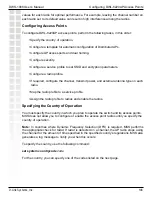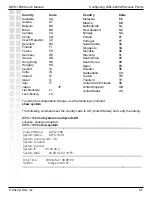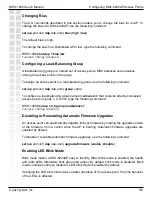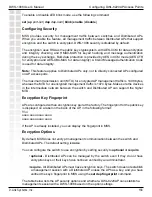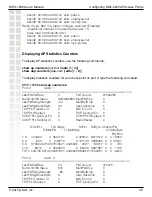
159
DWS-1008 User’s Manual
D-Link Systems, Inc.
Configuring DWL-8220AP Access Points
Configuring a Service Profile
A service profile is a set of parameters that control advertisement (beaconing) and encryption
for an SSID.
This section describes how to create a service profile and set SSID parameters. To create a
service profile and assign an SSID to it, use the following command:
set service-profile
name
ssid-name
ssid-name
An SSID can be up to 32 alphanumeric characters long. You can include blank spaces in the
name, if you delimit the name with single or double quotation marks. You must use the same
type of quotation mark (either single or double) on both ends of the string.
The following command configures a service profile named
corp1
, and assigns SSID
mycorp_
rnd
to it:
DWS-1008#
set service-profile corp1 ssid-name mycorp_rnd
success: change accepted.
The following command applies the name
corporate users
to the SSID managed by service
profile
mycorp_srvcprf
:
DWS-1008#
set service-profile mycorp_srvcprf ssid-name “corporate users”
success: change accepted.
Disabling or Reenabling Encryption for an SSID
To specify whether the SSID is encrypted or unencrypted, use the following command:
set service-profile
name
ssid-type
[
clear
|
crypto
]
The default is crypto.
Disabling or Reenabling Beaconing of an SSID
To specify whether the SSID is beaconed, use the following command:
set service-profile
name
beaconed
{
enable
|
disable
}
SSIDs are beaconed by default.
A DWL-8220AP radio responds to an 802.11
probe any
request only for a beaconed SSID. A
client that sends a
probe any
request receives a separate response for each of the beaconed
SSIDs supported by a radio. For a nonbeaconed SSID, radios respond only to directed 802.11
probe requests that match the nonbeaconed SSID’s SSID string.
When you disable beaconing for an SSID, the radio still sends beacon frames, but the SSID
name in the frames is blank.


